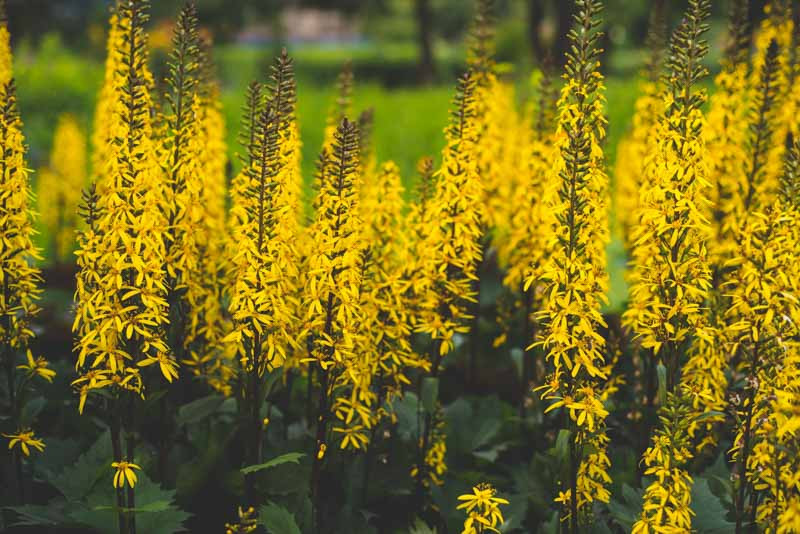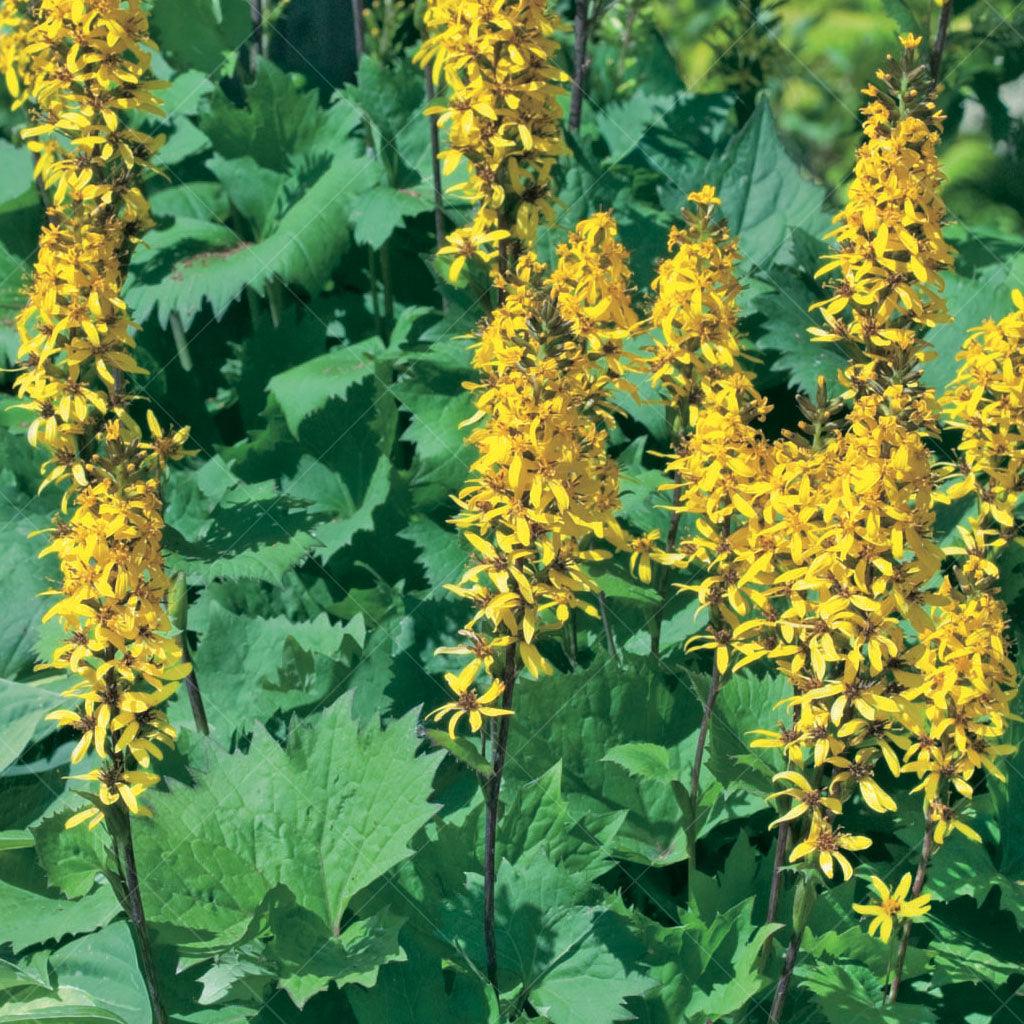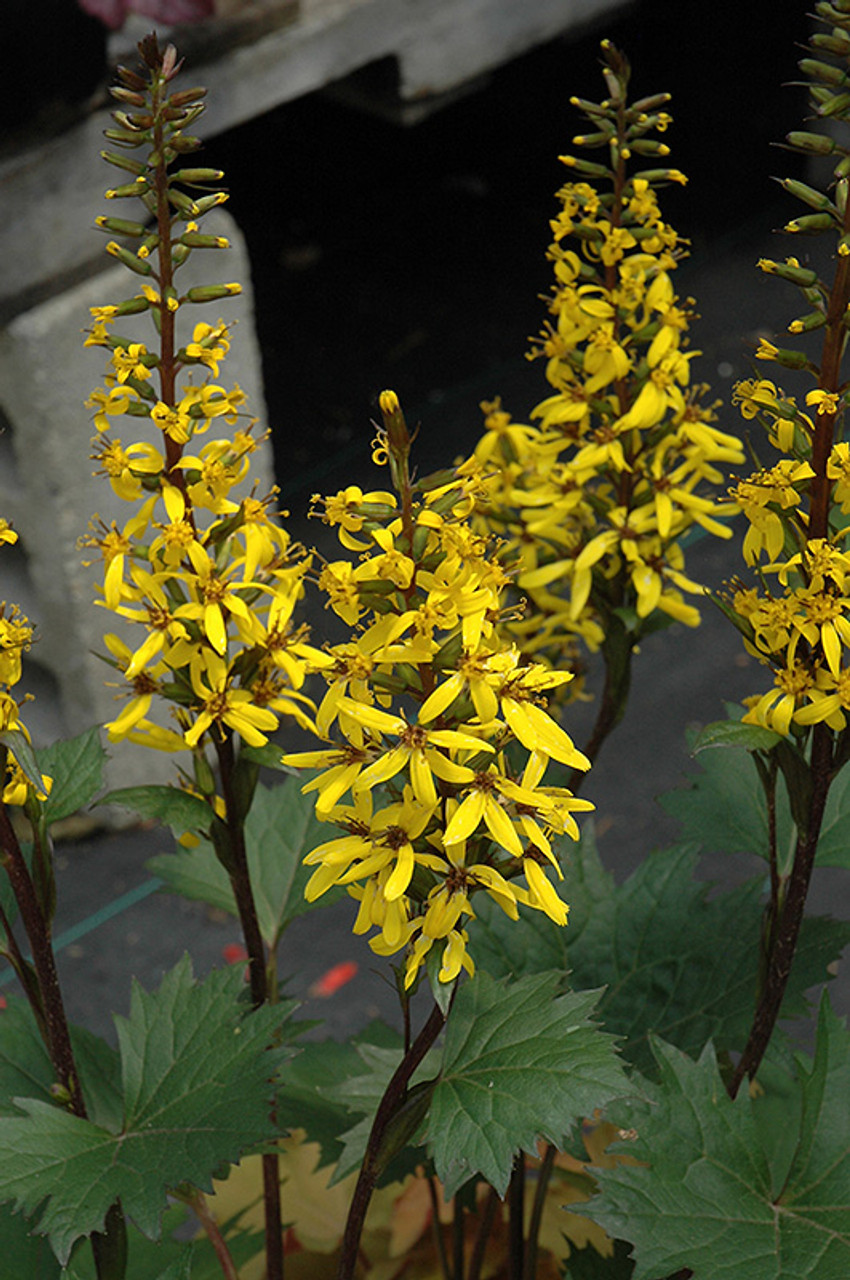Finding flowering plants suitable for shaded areas in your garden can be challenging, but Ligularia is an excellent choice. This attractive, semi-evergreen plant, commonly known as the leopard plant, is both easy to cultivate and maintain.
As a member of the aster family, Ligularia makes a striking addition to your garden beds. Its vibrant blooms attract a variety of pollinators, and its fall flowering season provides essential nourishment for these creatures as they prepare for winter.
Let’s explore this remarkable shade-loving plant, known for its stunning flower spikes and eye-catching foliage. It’s surprisingly easy to grow and offers many benefits.
Native Habitat
Ligularia originates from Asia, primarily found in regions of China, Japan, and Siberia. It typically thrives near water sources and beneath the cool canopy of woodlands, preferring moist, rich soil and some shade. In Japan, it is called “Metakaraku,” which translates to “sweet-smelling roots.”

Planting
You can plant Ligularia in either spring or fall, with each season providing unique advantages. Spring planting allows your Ligularia to establish itself and grow throughout the summer, while fall planting enables the plant to focus on developing a strong root system during the winter months.

Select a location with partial to full shade and dig a hole slightly larger than the root ball. Ensure the root ball sits about half an inch below the surrounding soil level.
Place the root ball in the hole, backfill with soil, and water deeply. Applying mulch on the soil surface is crucial, especially for fall planting, as it protects the new plant from cold temperatures.
Growing from Seed
While it is possible to grow Ligularia from seeds, they often have inconsistent germination rates. Seeds can take up to 42 days to germinate, so be patient if it seems to take a while. They germinate best at temperatures between 55-65°F (13-18°C).

Since these seeds require light for germination, surface sow them on moist potting mix or seed-starting mix. Lightly press them into the soil without covering them. Cover your seed trays with plastic wrap and place them in a cool, well-lit area.
Keep the seeds moist during sprouting and initial development, as they thrive in moist conditions. Avoid placing seedlings in direct sunlight, but ensure they receive some indirect light.
How to Grow
Ligularia is generally easy to cultivate, facing few pests aside from slugs and Japanese beetles. It thrives as long as it receives some shade and adequate moisture. Achieving a balance between light and water is key for this semi-evergreen plant.
Light
While Ligularia can tolerate almost complete shade, it requires some light to reach its full blooming potential. Ideal conditions include partial shade or bright, filtered light. In full sun, the leaves will wilt, and the flowers will not last as long.

If possible, plant Ligularia in a location that receives morning sun and afternoon shade. The intense afternoon sun can lead to wilting. The more sunlight your plant receives, the more water it will require.
Water
Ligularia loves moisture, so it may need extra attention when it comes to watering. If planted in a container, water it frequently—every day to every other day—depending on the season. For plants in the ground, the soil should remain consistently moist.
Water your newly planted Ligularia at least twice a week, ensuring deep watering to support its developing root system. Most species’ roots are sensitive to drought, making it essential to water thoroughly.

Whenever possible, position Ligularia near a water feature, such as a stream or pond. It will thrive in these environments, but even once established, expect to water it weekly. Ligularia grows quickly when its needs are met and will display wilting when thirsty.
Soil
Ligularia thrives in rich, loamy, fertile, and moist soil. A slightly acidic to neutral pH is ideal for optimal nutrient absorption. If your chosen location has poor or sandy soil, be sure to amend it with a generous amount of organic compost or manure before planting.

Temperature and Humidity
Ligularia exhibits impressive cold tolerance, with roots capable of surviving low temperatures and even enduring winters in Zone 3 with adequate protection. However, if temperatures drop below 30°F (-1°C), the foliage will be affected and will eventually die back. In regions without hard frost, Ligularia can remain evergreen.
The ideal growth temperature ranges from 60-75°F (16-24°C). The plant thrives primarily in the cooler spring and fall months. When temperatures exceed 75°F (24°C), it’s essential to ensure it receives plenty of water, as it can suffer in the afternoon sun during warmer months.

Ligularia thrives in humid environments, so if higher humidity is not available, consistent watering is crucial. Maintaining moisture and optimal temperature are the key factors for keeping this plant happy.
Fertilizing
Ligularia does not require excessive fertilization, especially when grown in rich soil, as it efficiently utilizes the nutrients available. A spring application of slow-release fertilizer or compost is typically sufficient.
Be cautious with nitrogen levels, as too much can lead to excessive foliage growth, which often results in fewer and less vigorous flowers.

Maintenance
In late fall, after the foliage has died back due to frost, you can cut Ligularia back to the ground. Alternatively, you can leave the dead foliage in place until spring for added winter protection and then cut it back for bushier growth. Regular deadheading will encourage more robust flowering.
Propagation
For the best results, propagate Ligularia through division. It’s advisable to divide the plants every two to three years, even if you do not plan to relocate them. This helps prevent overcrowding and allows each plant enough space to establish roots.
The best time for division is either early spring or late summer to early fall. Dividing in spring allows the plants to grow during the warm season, while those divided in the fall can establish their roots while entering dormancy.

Water the plant thoroughly the day before digging it up, and choose a cool or cloudy day for this task, as heat can stress the plants. Aim to dig up as much of the root system as possible, as Ligularia has deep roots—dig deeper than you might expect.
Gently work the soil away from the root ball using your hands. Look for natural divisions in the roots, as these are ideal spots for separation. By carefully working with the roots, you should easily identify where they naturally separate.
Use a knife to cut through the root crown, ensuring that each division includes some roots and shoots. Plant the divisions in the same manner as you did the original parent plant.
